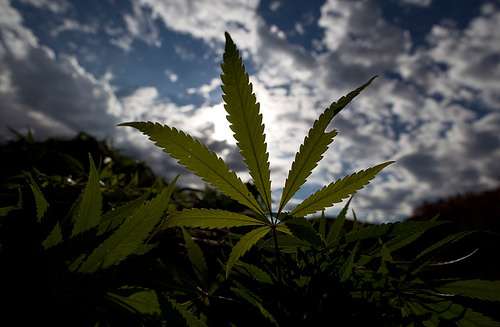New Mexican Administration Unveils its Drug Strategy

The new Mexican administration recently unveiled its new drug strategy. According to the plan the Mexican government will spend $9.5 billion on social programs that will work to discourage young people from joining gangs in 251 towns and cities across Mexico. The change comes after the disastrous drug policies implemented under ex-President Calderón, which saw thousands of soldiers deployed to the U.S./Mexican border and tens of thousands killed.
Mexico's new president, Enrique Peña Nieto wants the emphasis of this drug strategy to be on prevention. From The Guardian:
"It's clear that we must put special emphasis on prevention, because we can't only keep employing more sophisticated weapons, better equipment, more police, a higher presence of the armed forces in the country as the only form of combating organised crime,"
It's nice to see the new Mexican president accept that a military campaign is not going to work, but it is disappointing that he is choosing to address prevention by spending on social programs.
As a recent report from the Council on Foreign Relations points out, the drug cartels in Mexico already have plenty of economic influence that the Mexican government will struggle to compete with:
While assessments vary as to how much of the marijuana originates in Mexico, a 2010 Rand Corporation report (PDF) estimated it at anywhere from 40 to 67 percent. An estimated 95 percent of cocaine now travels through Mexico (PDF) into the United States, up from 77 percent in 2003. Overall, the U.S. State Department found that U.S. drug users send between $19 and $29 billion annually into the coffers of Mexican drug cartels.
Mexico's drug system provides direct or indirect employment for much of its population, says Brookings narcotics expert Vanda Felbab-Brown. She estimates that as much as 40 to 50 percent of the Mexican population works in the "informal, if not illegal, economy." Officials estimate that the drug trade makes up 3 to 4 percent of Mexico's $1.5 trillion annual GDP—totaling as much as $30 billion—and employs at least half a million people.
It might be worth Mexican (and American) authorities considering a drug policy that would really help reduce the influence of the cartels by introducing some safer and legitimate competition into the drug market that does not require violence to be used as a tool of enforcement. While the new Mexican administration may well think that focusing on prevention is a better way to address Mexico's drug problems no significant progress is likely to be seen until the cartels can no longer use the illegality of the drugs they are smuggling to their advantage.

Show Comments (10)